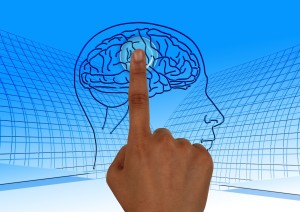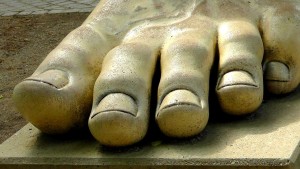Contributor: Judith Ann Miller, Ph.D., CACIII of 7 Bridges Recovery
“We have found that if a drug can be found to do the job of medical healing, a nutrient can be found to do the job. When we understand how a drug works,we can imitate its action with one of the nutrients.”
Pfeiffer’s Law – Carl Pfeiffer, M.D., Ph.D. 1987
The Opiate Receptor For Trauma Pain Management
 Opiates such as morphine have long been known to effectively reduce pain. In 1974, Candace Pert and Saul Snyder discovered that the brain has its own opiate receptor, the cellular binding site for endorphins in the brain. This provides evidence that the brain must produce something on its own that is akin to drugs like morphine.
Opiates such as morphine have long been known to effectively reduce pain. In 1974, Candace Pert and Saul Snyder discovered that the brain has its own opiate receptor, the cellular binding site for endorphins in the brain. This provides evidence that the brain must produce something on its own that is akin to drugs like morphine.
Dr. Pert’s discovery of opiate like chemicals produced in the body that control pain, immune responses and other body functions was an invaluable milestone. Prior to the opiate receptor discovery, scientists knew little about opiate drugs and how they affected the brain. It was merely known that opiates acted on specific neurons, and that opiate drugs that blocked their action all had a similar molecular structure. This new knowledge led to the identification of endorphins which have the same actions as morphine.
 In her book Molecules of Emotion (1997) – in the chapter The SSRI Saga, Dr. Pert stated:
In her book Molecules of Emotion (1997) – in the chapter The SSRI Saga, Dr. Pert stated:
“I am alarmed at the monster that neuroscientist, John Hopkins, Solomon Snyder, and I created when we discovered the simple binding assay for drug receptors 25 years ago. The public is being misinformed, about the precision of the selective serotonin reuptake inhibitors when the medical profession over-simplifies their action in the brain and ignores the body as it exists merely to carry the head around!
In short, these molecules of emotion regulate every aspect of our physiology. A new paradigm has evolved, with implications that lifestyle changes such as diet and exercise can offer profound, safe, and natural mood elevation.”
Addiction is a Treatable Disease of the Brain
A tried and true path to change has been implemented to inspire the courage to embrace sobriety, health, family, and community. Scientific methods have been employed for addiction rehabilitation and optimal brain function in order to manage the chronic disease of addiction. Cutting-edge modalities are utilized to integrate mind, body, and spirit by treating addiction as a brain disease. This integrated approach specializes in drug-free treatments, empowers the corporation of low energy neurofeedback, neurotransmitter rebalancing, evidence based therapies, 12-Step principles and spiritual/somatic/trauma-sensitive based therapies.
The Catalyst to Freedom
 Seven vital components to care which are sequentially provided and subsequently interwoven to employ the opiate receptor for achieving sustainable addiction recovery. These seven components (brain function renewal; mindful regeneration; spiritual replenishment; behavior revitalization; financial regeneration; relationship rekindling; and sustainable lifetime recovery) are briefly presented below:
Seven vital components to care which are sequentially provided and subsequently interwoven to employ the opiate receptor for achieving sustainable addiction recovery. These seven components (brain function renewal; mindful regeneration; spiritual replenishment; behavior revitalization; financial regeneration; relationship rekindling; and sustainable lifetime recovery) are briefly presented below:
Finding the Opiate Receptor with Brain Function Renewal
Neurological and biological systems must first be repaired and renewed before addicts can seek the opiate receptor and cross the remaining 6 bridges: Key aspects of this strategy are:
- Neurological Assessment
- Neurotransmitter Assessment
- Initial Detox and Medication Tapering
- Neurofeedback to Accelerate Natural Brain Synapse Repair
- Neuroceutical Supplements to Balance Neurotransmitters
- Nutrition and Probiotics to Balance Digestive System
- BioMat Therapy to Ease Withdrawal Symptoms
- Essential Nutritional Education
Finding the Opiate Receptor with Mindful Rejuvenation
 Mindful education is necessary to allow the brain and the mind to work and communicate effectively:
Mindful education is necessary to allow the brain and the mind to work and communicate effectively:
- Psychological Evaluation
- Individualized Recovery Pan and Counseling
- Awareness and Mindful Thinking Education
- Positive Thinking Experiences
- Intentional Thought Process Experiences
- Talking Circles and Group Therapy
- Self-Care and Journaling
- Trauma-Sensitive Yoga Sessions
- Physical Therapy / Massage
Finding the Opiate Receptor with Spiritual Replenishment
Closely related to mindful rejuvenation, spiritual replenishment provides spiritual and emotional guidance for the brain and mind to coalesce:
- Eye Movement Desensitization and Reprocessing (EMDR)
- Emotional Freedom Techniques
- Pain Release Techniques
- Meditation Techniques
- Experiencing Nature / Visiting Spiritual Locations
- Church Attendance / 12- Step Meetings
- Grieving Ceremony
- 7 Directions Prayer Exercises
- Labyrinth Experience
- Sweat Lodge Ceremony
Finding the Opiate Receptor with Behavior Revitalization
 With the mind, body, and spirit working in harmony, positive behavioral changes occur and allow for opiate receptor activity and sustainable recovery:
With the mind, body, and spirit working in harmony, positive behavioral changes occur and allow for opiate receptor activity and sustainable recovery:
- Trauma-Sensitive Talk Therapy
- Cognitive Behavioral Therapy
- Dialectical Behavioral Therapy
- Motivational Interviewing Techniques
- Feeling-State Addiction Protocol
- Acupuncture
- Triggers and Relapse Prevention Education
- Boundaries and Communication Skills
- Dual Diagnosis Care
- Lifestyle Evaluation
Finding the Opiate Receptor with Financial Regeneration
Career enhancement protocols allow opportunities for financial stability, a feeling of well-being via the opiate receptor, and a positive view of the future:
- Life Skills Evaluation
- Life Coaching
- Peer Assistance
- Employee Assistance Programs
- Anger Management
- Career Management
- Professional License Repair
- Legal Advocating
- Sustainable Budgeting
Finding the Opiate Receptor and Sustainable Lifetime Recovery
An opportunity to return to living as healthy individuals in recovery, prepared with unique knowledge and an individualized sustainable health plan, plus a renewed sense of self-respect, responsibility, and integrity:
- Individualized Life Plan
- Independent Living Arrangements
- Support System
- Positive Thinking Mastery
- Awareness /Mindfulness Mastery
- Group Therapy Leadership
- Therapy Schedule
- Meditation Commitment
- Exercise Commitment
- Nutritional Plan
The Dopamine-Serotonin Balance in Sustaining Positive Opiate Receptor Activity
 Serotonin is important in keeping the body’s inhibitory and excitatory neurotransmitters in balance. It also prevents over-stimulation due to high excitatory activity. Serotonin is a therapeutic target for diseases such as depression, compulsive disorders, anxiety and migraines.
Serotonin is important in keeping the body’s inhibitory and excitatory neurotransmitters in balance. It also prevents over-stimulation due to high excitatory activity. Serotonin is a therapeutic target for diseases such as depression, compulsive disorders, anxiety and migraines.
Dopamine is responsible for feelings of pleasure, satisfaction and muscle control and function. It plays a significant role in cardiovascular, renal, hormonal, and central nervous system. It is wonderful to experience a Dopamine High, especially when it is as natural as watching red Tailed Hawk soring in circles. The simple joy of seeing seven hawks in one day is much more powerful than inhaling a cigarette, or taking a pill.
Dopamine-serotonin balance insures that unimportant signals are terminated or ignored and that important signals are relayed and acted upon. This mindful, neurological balancing act becomes the catalyst to freedom and a functional lifestyle.
This was the second of a two part series. To read the first part of the article, click here.
Community Discussion – Share your thoughts here!
Are you familiar with the latest research on Opiate Receptors? How has information on opiate receptor research impacted your recovery?
About the Author:
 Dr. Judith Miller, PhD is a CAC III and creator of the 7 Bridges Recovery program. Fundamental to the program is the utilization of therapies in addition to individual and group counseling supplemented by the traditional 12 steps. Dr. Miller serves on the Colorado Attorney General’s Task Force on Prescription Drug Abuse and is a registered psychotherapist. She is the Executive Director of Courage to Change Ranches and the Serendipity Mountain Lodge – Colorado-based residential recovery centers for chemical dependency and prescription drug addiction.
Dr. Judith Miller, PhD is a CAC III and creator of the 7 Bridges Recovery program. Fundamental to the program is the utilization of therapies in addition to individual and group counseling supplemented by the traditional 12 steps. Dr. Miller serves on the Colorado Attorney General’s Task Force on Prescription Drug Abuse and is a registered psychotherapist. She is the Executive Director of Courage to Change Ranches and the Serendipity Mountain Lodge – Colorado-based residential recovery centers for chemical dependency and prescription drug addiction.
The opinions and views of our guest contributors are shared to provide a broad perspective of addictions and co-occurring disorders. These are not necessarily the views of Addiction Hope, but an effort to offer a discussion of various issues by different concerned individuals. We at Addiction Hope understand that addictions result from a combination of environmental and genetic factors. If you or a loved one are suffering from an addiction, please know that there is hope for you, and seek immediate professional help.
Last Updated & Reviewed By: Jacquelyn Ekern, MS, LPC on August 20, 2015. Published on AddictionHope.com
